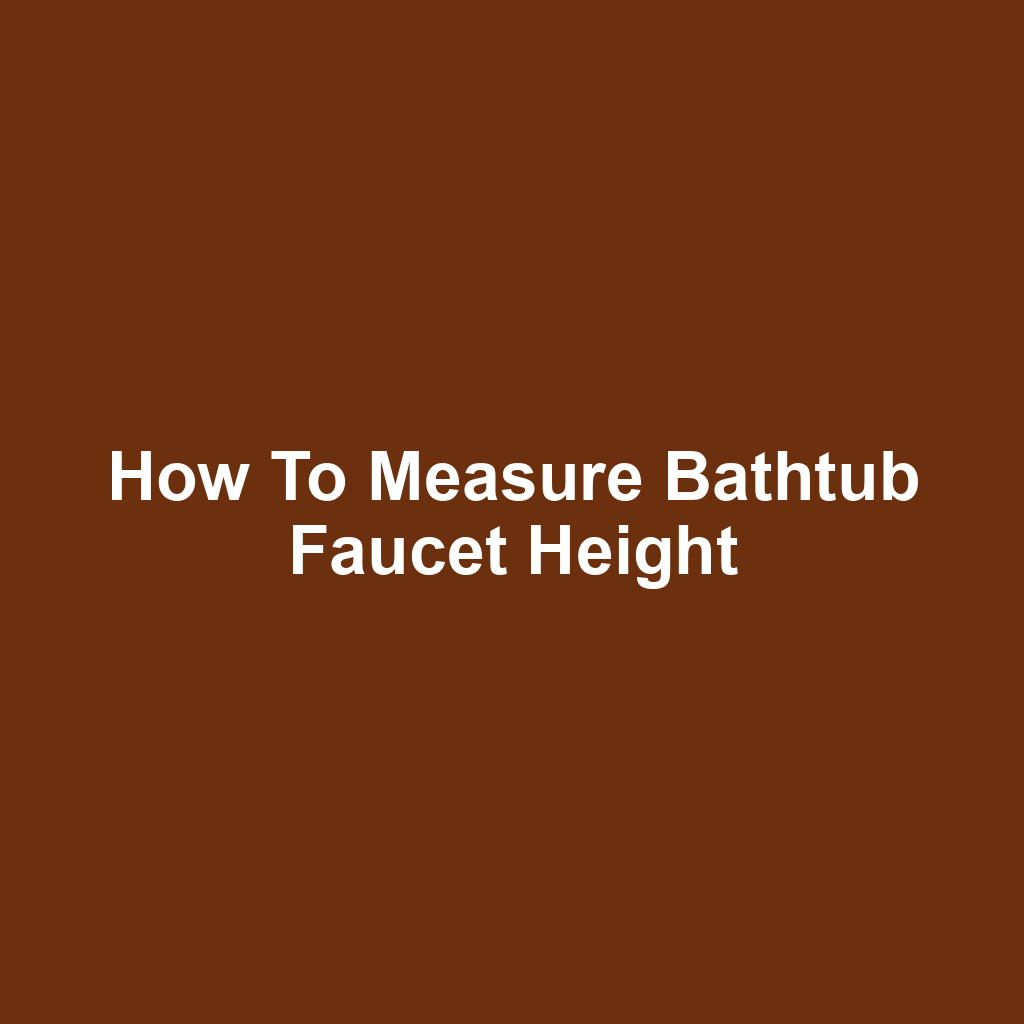When I decided to update my bathroom, one of the first things I needed to do was measure bathtub faucet height. It might seem like a small detail, but getting the right height can make a huge difference in both functionality and aesthetics. I’ve learned that using the right measuring tools is crucial for this task, and I want to share my insights. Understanding standard faucet heights helped me choose the perfect option for my space. By the end of this article, you’ll feel confident in how to measure bathtub faucet height for your own bathroom renovation.
Choosing the Right Measuring Tools
I’m considering using a tape measure and a level to ensure I get the most accurate faucet height. I know a tape measure will help me get precise measurements from the bottom of the tub to the desired height. A level is essential because I want to make sure the faucet is perfectly aligned. I’ve also thought about using a pencil to mark the measurements on the wall. It’ll help me visualize where the faucet will sit. I might even grab a helper to hold the level while I measure. I’ve learned that having the right tools makes the job easier and more efficient. I’m excited to start this process and see how it all comes together. With my measuring tools ready, I’ll now need to understand standard faucet heights.
Understanding Standard Faucet Heights
Standard faucet heights typically range from 8 to 10 inches above the rim of the bathtub, which I’ve found to be quite convenient. I like having the water flow at a height that’s easy to access without bending too much. It makes filling the tub a breeze, and I don’t have to worry about splashing too much. When I’ve installed faucets, I’ve noticed that going below 8 inches can lead to awkward angles. On the other hand, exceeding 10 inches can sometimes make it harder to reach the water. I’ve seen various styles that fit within this standard range, and they all seem to work well. It’s interesting how these measurements can affect the overall experience in the bathroom. I always consider both functionality and aesthetics when selecting faucet heights. Next, I’ll dive into the specifics of measuring from the bathtub rim for the perfect installation.
Measuring from the Bathtub Rim
Measuring from the bathtub rim gives me a clear understanding of how high the faucet will sit above the water level. I usually grab my tape measure and start right at the edge. It helps to note the distance from the rim to the desired height. I want to ensure it’s comfortable for both filling the tub and using the faucet. I often double-check my measurements to avoid any mistakes. After getting my height, I consider the angle of the spout. This step can really influence how water flows into the tub. I like to imagine how the water will cascade from the faucet. Next, I’ll need to think about considering water flow and splashing.
Considering Water Flow and Splashing
Considering water flow and splashing, I’ve found that a higher faucet can help reduce mess during use. I’ve noticed that when the faucet is elevated, it directs water straight into the tub. This way, I don’t have to worry about water spilling over the edges. I also think about the angle at which the water flows; a higher installation can create a more controlled stream. I’ve experimented with different heights, and it’s clear that a higher faucet minimizes splatter. It’s especially helpful when I’m filling the tub quickly. I’ve learned to pay attention to the distance from the rim to find the sweet spot. Having a higher faucet allows me to enjoy a bath without constant cleanup. Overall, I appreciate the balance of aesthetics and functionality in my bathroom design.
Finalizing Your Faucet Selection
Now that I’ve thought about water flow and splashing, it’s time to finalize my faucet selection. I need to consider the right style and ensure proper compatibility with my existing setup. With these points in mind, I can make a confident decision.
Choosing the Right Style
Choosing the right style for my faucet can really enhance the overall look of my kitchen. I’ve been leaning towards a modern design that complements my other appliances. It’s important for me to find a finish that matches my cabinet hardware as well. I’ve also considered how the faucet’s shape will fit with my sink and countertop style. Ultimately, I want a faucet that’s not just functional, but also adds to the overall aesthetic of my kitchen.
Ensuring Proper Compatibility
I’m double-checking the dimensions and connections to make sure my new faucet will fit perfectly with my sink. I’ve measured the height from the countertop to ensure it won’t interfere with the faucet’s spout. I’m also looking at the distance between the handles and the spout to match the existing setup. It’s crucial that I confirm the necessary adapter for the plumbing connections, too. Once I finalize these details, I can confidently proceed with my selection.
Conclusion
In wrapping up this guide on measuring bathtub faucet height, I’ve realized how critical it is to take accurate measurements for both functionality and style. I’ve learned that standard heights play a vital role in ensuring easy access and efficient water flow. By using the right tools and taking the time to double-check my work, I can avoid common pitfalls during installation. It’s also clear that experimenting with different heights can lead to a better design outcome. Ultimately, choosing the right faucet not only enhances my bathroom’s aesthetics but also improves its overall usability.
If you’re dealing with a broken car window and need some quick solutions, I highly recommend checking out this helpful guide on temporary fixes. It offers practical tips to keep your vehicle secure until you can get a permanent repair. You can find it here: broken car window.
